- Charlotte, North Carolina
- Call Us Today : support@plumbingprofessional.net
Blog | Plumbing Professionals Near Me - Part 2
- By : Leonard Simmmons
- October 22, 2021
- Comments : 0
Preventing Drain and Pipe Problems with Camera Inspection
Clogs and leaks can be a common plumbing problem, even for the most well-maintained of homes. While most issues may be solved with a plunger or drain cleaning, other problems may be difficult to detect until it’s too late. Sometimes you’ll need to call in for professional help, but the good news is that a plumber has the right tools to not only repair the problem but thoroughly inspect your plumbing.
How a Camera Inspection Keeps Your Plumbing Clean, Clear and Functional
A camera inspection works with a plumber attaching a waterproof camera to a sewer cable that is pushed into your plumbing. While the camera travels through your plumbing, the plumber can look inside your pipes to detect any potential problems. Your plumbing is complicated, and early detection is crucial to preventing most plumbing catastrophes. Nobody wants to deal with a busted pipe or backed-up sewage, and luckily with a camera inspection, you don’t have to. Here’s how a camera inspection can help you.
- It’s accurate. The best perk of a camera inspection is how precise it is. Since a plumber can now visually inspect your plumbing, they can spot exactly what and where the problem is. It’s a quick way to accurately diagnose the problem without the money-wasting trial and error.
- It can prevent future problems. A camera inspection can catch much more than a stubborn clog or leak. Plumbers can catch other issues such as cracks in the piping, pests, and other damages.
- It involves less labor. Plumbers used to have to dig to get at the sewer line or cut into the walls to access your pipes. Most sewer inspection cameras are fit to travel through large pipes or the smallest of drains.
When Your Plumbing Needs a Camera Inspection
Your plumbing can be complicated. Some issues happen on the surface, but everything is connected to your main sewer line, and the deeper clogs or leaks will need professional help. The trick is to know when you’ll need to call in a plumber. The good news is that there are plenty of warning signs to watch out for, including the following.
- Slow drains. If you’re having trouble with a sink, the issue may be a clog in your home’s plumbing. If it seems that several water fixtures won’t drain properly, then you most likely have a clog somewhere in your sewer line. A thorough drain cleaning with hot water and a mild detergent, or vinegar and baking soda may work, but if flushing each drain does nothing, then it’s time to call a plumber.
- Pests. Rats and bugs are never a good thing, but if your home is visited by these unwelcome pests, they may be coming from a crack somewhere in the sewer line. Cockroaches and rats can squeeze through even the smallest of gaps. If you suspect there’s a crack somewhere, it’s crucial to seal it immediately.
- Higher water bills. If it seems like your utility bills are higher than usual, the culprit could be a hidden leak. Because leaks can be small, a camera inspection will be able to accurately and quickly detect the source of the leak.
- Sewage backup. Sewage should go down your pipes, but if it winds up going the opposite direction, you’ll want to call a plumber immediately. If the sewage only backs up out of one drain, then it’s most likely isolated to that drain. If it seems like sewage backs up every time you flush a toilet or use a sink, then the problem may be much deeper in your sewer line.
- Foul odors. You shouldn’t smell sewage in or around your home. If you do, there’s probably a crack somewhere in the sewer line. A camera inspection will be quick to find where foul odors are coming from.
- Mold. If you smell something foul and musty, call a plumber immediately. Not only is mold toxic to your health, it needs excessive moisture to grow. If there’s mold growing in your home, there’s usually a leak that’s causing it.
- Greener, lusher grass. While your lawn may be looking good, it may be due to a leak in your sewer line or septic tank. Vegetation thrives off of raw sewage. Watch for pools of septic water that can form in your yard from a leaking sewer line.
Be Proactive with Your Plumbing
Keeping your plumbing clean, clear, and functional can be a challenge, but a camera inspection can help make it easier. Detecting problems early ensure your plumbing stays well-maintained and spares you the cost and trouble of much worse plumbing problems. Don’t wait until your pipes burst, call a plumber today and schedule a camera inspection.
Read More- By : Leonard Simmmons
- October 7, 2021
- Comments : 0
Sump Pump Maintenance Tips: How to Clean a Sump Pump
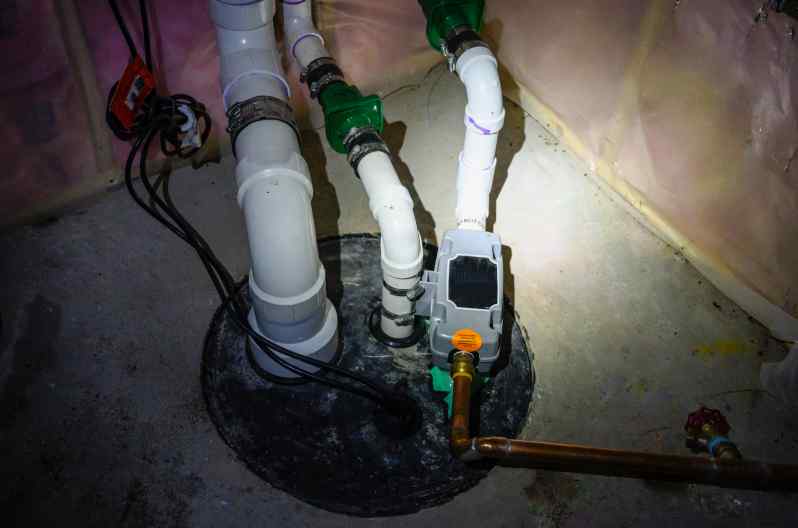
Sump pumps are a great way to prevent your crawl space or basement from flooding. Unfortunately, sump pumps will get dirty and can even clog over time. If the pump can’t remove water from the basin, it will eventually overflow. From monthly sump pump maintenance tips to how to clean a sump pump, we cover what you need to know to prevent water damage in your basement or crawl space.
How to Clean a Sump Pump?
Performing regular maintenance and cleaning your sump pump takes less than an afternoon and will ensure that your basement stays dry throughout the year. If you have a backup sump pump, you should clean and test it as well.
1. Unplug and Disconnect Your Sump Pump
Start cleaning your sump pump by unplugging and disconnecting it from the discharge pipe. Most pumps are connected to the discharge pipe with a rubber sleeve. Use a screwdriver to loosen the sleeve, the pull it off the pipe.
2. Remove the Pump from the Basin
Once it is unplugged and disconnected, remove the pump from the basin. Hold it over the basin for a moment so it can drain. If you’re worried about making a mess, but the pump into a bucket so it doesn’t drip on the floor.
3. Clean the Pump
Use a rag to clean the outside of the pump. If necessary, scrape away grime with a scrub brush. Alternatively, you can take it outside and rinse it off with your garden hose.
4. Drain the Sump Basin
Use a bucket or a wet-dry vacuum to empty the sump basin. Also remove any dirt, stones or gravel at the bottom of the well. They can clog the pump and increase the risk it will fail when you need it most.
5. Remove and Clean the Grate
If your sump pump sits on a grate, remove and clean it as well. Either wipe it down with a rag or spray it with your garden hose.
6. Clean your Sump Pump Basin
Clean the sump basin walls with a rag to remove dirt and grime. While it doesn’t need to be spotless, make sure the drain holes are clear. Cleaning your sump pump basin will also help remove smells as well.
7. Put the Sump Pump Back
Now that it’s clean, you can replace the pump. If you have a grate, put it back as well. Make sure the pump is level and in the correct position to work properly. The float arm should move freely and not touch the basin walls.
8. Reconnect the Discharge Pipe
Reconnect the pump to the discharge pipe and make sure the sleeve is properly tightened. While you should avoid over-tightening the clap, make sure that it won’t leak when the pump runs.
9. Plug-In and Test the Pump
Plug the pump back in, then fill the basin with water until the pump switches on. Watch the pump run to see if there is a problem.
How Often Should You Clean Your Sump Pump?
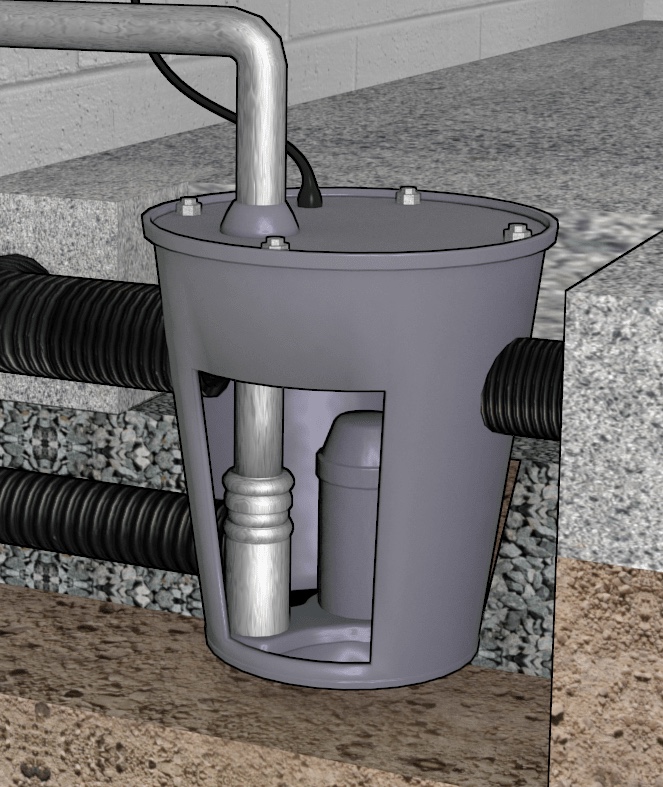
You should clean your sump pump every three to six months depending on how often it runs. We recommend cleaning it in late winter or early spring as well as in late summer or early fall.
If your sump pump runs a lot during the spring, consider cleaning it again in early or middle summer. You may need to clean it in winter as well if there are frequent thaws and snowmelt.
In addition to sump pumping cleaning, you should also do regular maintenance as well. Test your pump every four to six weeks by pouring in a bucket of water to make sure it runs properly. This will help prevent sump pump failures.
What Type of Sump Pump Cleaner Should I Use?
The best sump pump cleaner is regular household white vinegar. Not only is it inexpensive, but it will remove dirt and prevent smells. Mix together equal parts of water and vinegar, then use a rag to wipe down your sump pump. Use a scrub brush to remove stubborn dirt or grime.
If you see mold or your sump pump has a strong smell, you can use bleach instead of vinegar. Mix a quarter cup of bleach in a gallon of water and clean the sump pump and the basin with a rag. Once you put the sump pump back together, add another quarter cup of bleach to the basin to control odors.
Monthly Sump Pump Maintenance Tips
In addition to your yearly sump pump maintenance, you should also perform monthly check-ups to ensure it works when you need it most. Always unplug the pump before making adjustments to the pump to prevent injury.
- Normal vibrations can cause the pump to shift and may prevent the float arm from working properly. Make sure it is in the proper position in the sump basin.
- Check that the pump runs properly. Pour in a bucket of water until it runs. While you can pull the float up instead, running it too long can damage the pump.
- Look at the power cord for frayed wires and cracked or worn sheathing. Replace the power cord if it is damaged.
- If you have a ground fault circuit interrupter (GFCI) outlet, trip and reset it to ensure it works properly.
- Pour in one cup of vinegar or one-quarter cup of bleach to remove smells and kill bacteria.
- If you have a backup, test it as well to make sure that it works properly.
Frequently Asked Questions About Sump Pump Maintenance and Cleaning
Here are some of the most asked questions about cleaning and maintaining a sump pump.
Do sump pumps need maintenance?
Yes, sump pumps do need maintenance. You should test your sump pump every four to six weeks and clean it every three to six months.
How often should you clean your sump pump?
You should clean your sump pump every three to six months depending on how often it runs. If it only runs occasionally, cleaning it twice a year is fine. If your pump runs more often, you should clean it more often.
Can I pour bleach in my sump pump?
Yes, it is safe to pour bleach into your sump pump. This used to be a concern with old cast iron pump models, but bleach will not damage newer pumps.
How much does it cost to clean a sump pump?

If you clean it yourself, it only costs a few dollars to clean a sump pump. It’s easy and only takes a few hours. If you hire someone to clean your sump pump, they will usually charge anywhere from $65 to $130.
Read More- By : Leonard Simmmons
- September 16, 2021
- Comments : 0
Can You Put Coffee Grounds Down the Sink?

Ever heard that putting coffee grounds down the sink can clean or freshen the scent in the drain? Don’t fall prey to the myth! You should never use a garburator like a garbage can. Take it from the experts at Mr. Rooter® Plumbing: resist the urge to put coffee grounds down the drain unless you want to have some serious clogs on your hands.
Let’s take a closer look at why this is a problem and what you can do if you’ve already committed the sin and are facing a clog in your kitchen sink drains.
Why You Shouldn’t Put Coffee Grounds Down the Sink
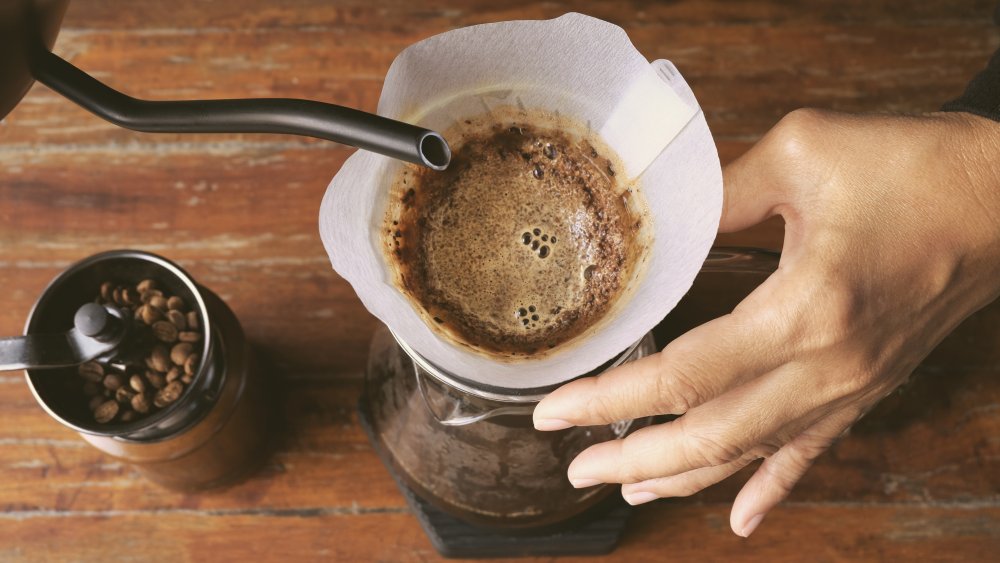
If food can go down the garburator, why isn’t the same true for coffee grounds? Unlike most foods, coffee grounds clump together in water rather than breaking down. With time, the grounds can build up inside your sink drains, creating clogs that can prohibit the drains from doing their job. Coffee grounds should always go in the garbage can or compost. They also serve as a nice fertilizer for your garden if you have a green thumb.
Other items that should go in the garbage rather than the garburator include:
- Grease, oil and fats
- Starchy foods like pasta, rice, potatoes or potato peels
- Fibrous items like eggshells, banana peels, fish skins and celery
- Anything that is not food, like cigarette butts, metal, wood, glass and sponges
Like coffee grounds, these items can clog your drains or jam the garburator. When it doubt about where to put kitchen waste, always choose the garbage can or compost.
What to Do If You Put the Wrong Stuff Down the Drain
If the deed has been done, and you need garburator repair, help with drain clogs, or other kitchen plumbing repairs, it’s important to get service from experienced plumbing professionals. Signs you need help with a clogged drain or malfunctioning garburator include:
- Water backing up out of the sink drain
- Slow draining water in the sink
- A gurgling noise coming from the sink
- Odour of rotting food coming up from the kitchen drain
- Food particles visible in the sink after you run the dishwasher
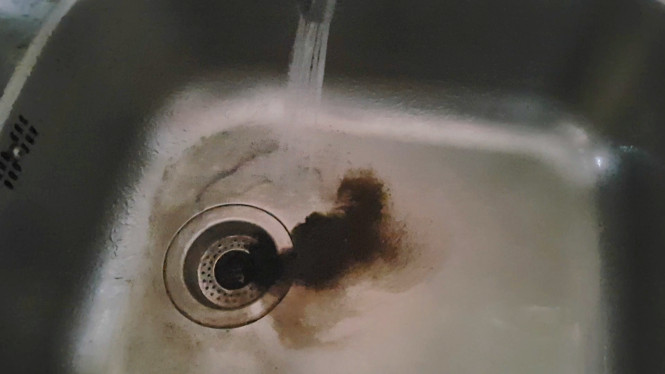
If you notice any of these problems with your kitchen sink, it’s time to call on the licensed, expert technicians to evaluate your kitchen plumbing and garburator. They have the professional tools and expertise to identify the source of your problem and provide the efficient repairs you need to get your kitchen sink and garburator performing optimally once again.
Get an estimate for plumbing services online now or call us for more information.
Read More- By : Leonard Simmmons
- September 3, 2021
- Comments : 0
How Do I Remove Calcium Buildup On My Faucet?
How Do I Remove Calcium Buildup on a Faucet?

If your faucets have a cloudy look to them, it’s probably because they’ve been stained by your tap water. Especially if you have hard water, minerals are going to collect around your appliances over time. The scummy and scaly deposits that result is calcium buildup is harmless but look pretty nasty. Follow this helpful guide for getting rid of calcium buildup for faucet repair.
4 Ways to Remove Calcium Buildup
- With Chemicals: Wipe down the affected faucet with a wet cloth and all-purpose cleaner. Dish detergent will also work in a pinch. Make sure to focus on scrubbing under and in back of the fixture in particular, and anywhere else water tends to accumulate. Rinse the sink and wipe any remaining residue dry when you’re done.
- With Lime: Wipe calcium buildup with a lemon wedge. The citric acid will help dissolve the calcium minerals sticking to chrome, copper, or brass. Rinse the sink out and dry the faucet.
- With Vinegar: Wrap a bag or cloth covered in vinegar around your faucet. Keep it there for several hours and wipe down the surface when you’re done. Vinegar and baking soda can also be combined to make a paste for scrubbing calcium deposits.
- Remove the Aerator: The aerator is the small filter on the edge of your faucet with the screen. Unscrew this piece and use a toothbrush or another small brush to scrub away calcium buildup from the inside, then place it in a bowl with vinegar for an hour and dry it before screwing it back on.
Consider a Water Filtration System to Prevent Hard Water Scale
If you’re tired of constantly having to clean that nasty mineral buildup from your faucets and appliances, you may wish to consider adding a water filtration system to your home. Whole-home water filtration is a simple way to get better quality water that won’t wreck your fixtures, etch your glassware, or even dry out your skin and hair in the shower. Curious about how your water supply measures up? Dutton offers FREE water analyses that can let you know exactly what’s in your water. There is no risk or obligation—call us for more information.
Need Help? Call Today!
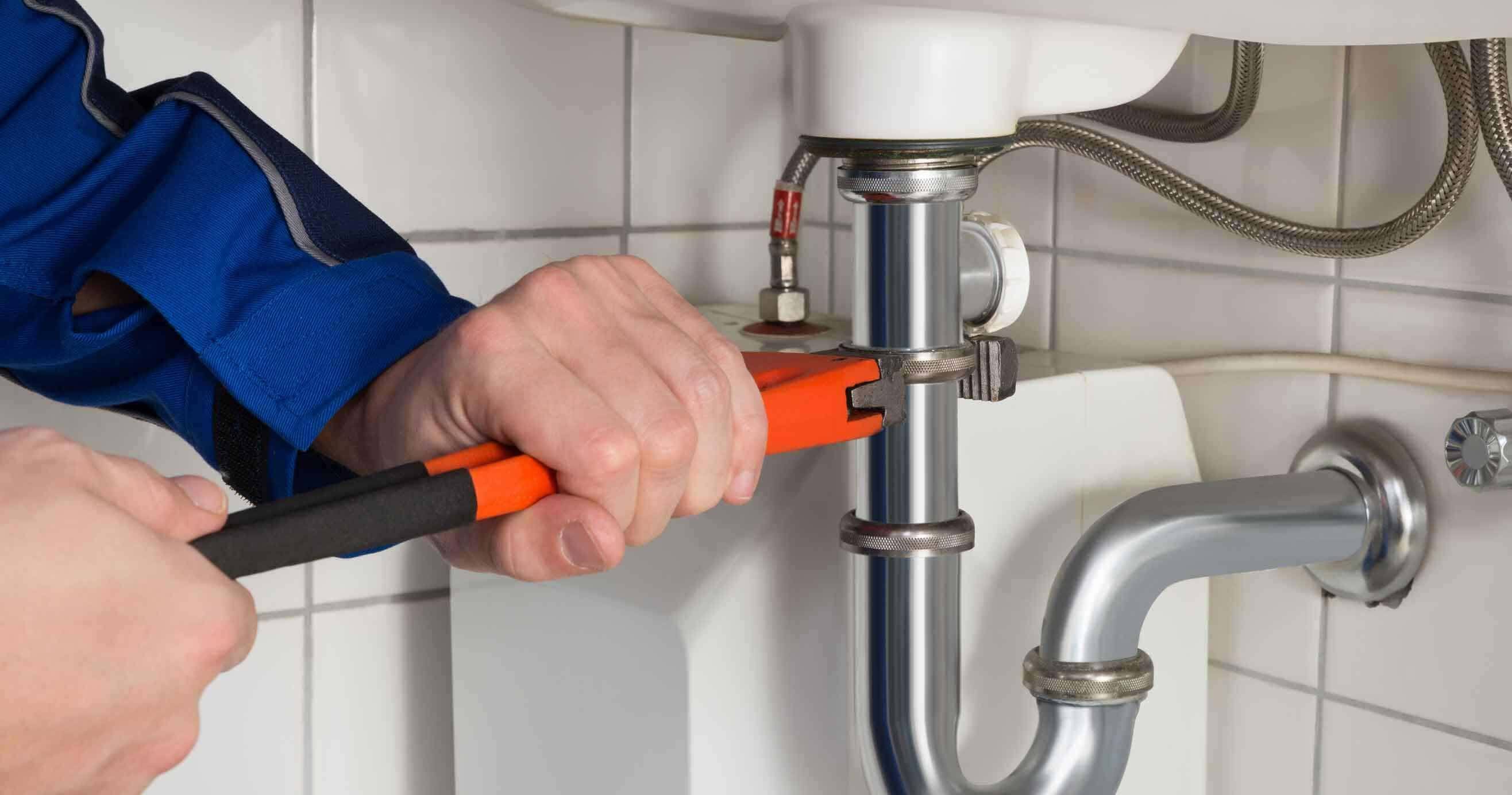
For deep cleans and more intense repairs, contact us today. From sinks to showers, if water comes out of it, we can help. We also offer affordable financing and various coupons, so you never have to feel like you can’t afford the best. Call to speak with a friendly and skilled technician right now and request same-day service.
Read More- By : Leonard Simmmons
- August 25, 2021
- Comments : 0
Plumber Blogging: 10 Blog Post Ideas for Plumbing Businesses
Are you a plumbing business with a blocked blog?
Maintaining a consistent blogging schedule when you’re clean out of ideas can be tough. The whole process becomes a slog. After a while, you wish you’d never started the blog in the first place.
However, in this post, I want to give you an inspirational helping hand.
The following 10 blog post ideas for plumbing businesses can together form the entire body of your blogging calendar. Each one simply needs a few adaptations to match the circumstances of your company and its customers.
Let’s get the ideas flowing!
1. Most frequently asked plumbing questions
Why is flushing my toilet so noisy? How do you avoid frozen pipes? What’s the difference between hard water and soft?
You’ll know the questions you get asked over and over again. Turn some of the answers to these popular questions into blog posts. Explain to readers how they can prevent damage from occurring and how to fix minor problems themselves.
People will be typing these questions into their search engines. The more of these questions and answers you have, the more likely people needing your services will find you.
Don’t worry about answering questions too well which allows the customer to fix the problem themselves. In most cases, they’ll try, and fail, and then get on the phone to you.
2. Emergency plumbing solutions
It’s unlikely a homeowner whose blocked toilet is overflowing onto the bathroom floor is going to bother reading a blog post. However, an emergency plumbing solution post is not written for happening-right-now problems.
Sometimes people are aware they have a problem in the offing. They know they should get it fixed but perhaps money or time is not on their side, so they prepare by reading what they should do if the worst happens.
When the shit does eventually hit the floor, your name will be in their mind thanks to the helpful information you provided.
3. A hard plumbing truth
Is there a problem you see homeowners dealing with every day of the week? Perhaps in your regional area, hard water is an issue, for example. The high mineral content is causing more frequent damage to equipment. You can write a detailed blog post stating the causes and consequences.
Inside the post, you can also provide tips and advice on how to mitigate problems that occur and how to best avoid related negative issues arising in the future.
The cold hard plumbing truth can be technical or it can focus on a legal or economic issue homeowners will need to think about. Readers will see you as an honest and frank professional they can trust.
4. Biggest plumbing myths
The drain is in good condition if things go down it, right? You’ll know this isn’t always the case but many homeowners won’t. Take some of the most common misconceptions you come across in your daily work and turn them into blog posts. Detail the plumbing myth and then debunk it.
You can write a multi-myth list-style blog post like this Delaware Valley plumbing company did or you can take one myth at a time. A fine example of the latter comes from an Australian plumber who pulverized the myth that all plumbers still use Electric Eels or Metal Snakes to clear blocked stormwater drains.
5. Tips on saving money
Can changing your shower head save you money? Homeowners, especially during difficult economic times, are looking for ways to save money wherever they can.
Provide your customers with a wealth of tips, advice, and strategies to reduce their costs when it comes to matters of water, power, and infrastructure. Explain how the changes can retain the quality they already enjoy whilst also soothing their bank balance.
Your readers will again see you as a trustworthy expert they can rely on to help carry out the required changes.
You might also like to read:
- Business Blogging: The SEO Benefits of Maintaining a Company Blog
- Why a Beautiful Website is Not Enough to Make Your Business More Money
6. Buying guide
Help readers select and purchase the right fittings they need for their homes. Think of the common fixtures you install every week and the various options that are available. For the inexperienced, choosing the right valves, toilets or showerheads can be a headache.
An example of a guide for buyers comes from a British plumbing company that explores the art of choosing the right shower for the right system.
This type of blog post will catch potential customers at the stage where they are looking to make changes to their homes. By giving them good quality and helpful guidance that genuinely helps their decision-making, you’ll be on their mind when it comes to installation.
7. Surf the news
As plumbers, you’ll instinctively be attuned to plumbing-related news stories. Think of something in the media recently which caught your attention and might be of interest to your readership. It can be serious or it can be amusing.
For example, if it’s winter you can write about the latest freezing cold weather which has caused damage to pipes. In this post, you can offer solutions on how to unfreeze pipes without damaging them.
Other stories might be funny such as the drastic way to stop men from leaving the toilet seat up called the ‘Main Drain’.
These news stories will get your search engine attention plus be entertaining for your regular readers.
8. Personal stories and anecdotes
Plumbing blogs, like all business blogs, are not only about serving answers to problems. They are also about connecting with readers on a more personal level. Blogging is a conversation.
With this in mind, write some blog posts about you and the experiences you’ve had during your plumbing career. Tell some stories about the jobs you’ve had to do, the people you’ve met, and even some of the mishaps that occurred (but which you fixed). Why did you become a plumber? (Great example: Why I Got Into the Plumbing Business)
You can also weave personal details into the previously mentioned blog posts. Mention your wife every now and then. Say when and where you’re going on holiday. Connect a plumbing issue to a problem your friend or relative had.
All this will make you more relatable to people. They’ll trust and like you before they even meet you.
9. Behind the scenes of your plumbing company
Another way to build the trust factor is by showing people how your business is run on a day-to-day basis. Take photos of your staff and of your premises. Write about who gets into the office first in the morning and what they do. Profile a new apprentice.
You might be surprised how much the human factor interests people, even those new to your website. Whist these should remain an occasional part of your blogging schedule, they are a good way to build your personal brand and showcase your professionalism and ethos.
10. About your local region
What’s special about your area of the country? As a local business, you’ll be seeking to attract customers from the local region. In order to get these people to find you online, much of your content will need to focus on the names of the cities and counties you serve.
A good way to do this is by writing about news, events, landmarks, and anything else of interest nearby. Try to relate it all to plumbing in some way but you can also write the occasional off-topic piece like a Tennessee plumbing company did in their post 41 Facts About Knoxville.
Another example shows how a British plumbing company incorporated a location when talking about problems arising from a change in kitchen designs.
Turn the taps on!
Experiment with all 10 of these business blog post ideas for plumbers. Test which ones gain the most views and also the type you enjoy writing the most.
It’s important to find some satisfaction in blogging. When you enjoy the process, this carries over to the reader and you’ll find increased engagement as a result.
What other ideas can you think of for a professional plumber’s blog?
Plumbing offers huge blogging potential. When preparing this blog post I came up with 46 blog post ideas for plumbers but narrowed it down to just 10. If you’re a plumbing company serious about blogging then I can help you develop a long-term strategy for blog content creation. Get in touch if you’re interested in working together.
Read More- By : Leonard Simmmons
- August 16, 2021
- Comments : 0
5 REASONS WHY YOU SHOULDN’T FLUSH FOOD DOWN THE TOILET
When customers contact us looking for cheap plumbing services, it’s occasionally because they caused a problem with their plumbing system by flushing food scraps down the sewer.
Although many of us have become very reliant on our garbage disposal systems, which most people agree are one of the best inventions of the 20th century. Having the convenience of just rinsing we wash away your dinner plates and flipping a switch so all the food scraps isn’t something that everyone has access to.
Unfortunately, too many people are tempted to simply flush their food scraps down the drain. The primary excuse that we encounter is that they don’t want to have to deal with the smell of food waste in their kitchen until they dispose of the garbage the next day. This is understandable as disposing of fish or eggs can be a little smelly
HOWEVER, HERE ARE THE REASONS WHY YOU CANNOT FLUSH FOOD DOWN YOUR TOILET.
THE PIPES AREN’T DESIGNED FOR FOOD
Most pipes are not designed to run from your toilet to your major sewer and toilets are not designed to deal with food scraps to begin with. Because of this, food can easily block these pipes and create a backlog of raw sewage that can snow back into your home or apartment.
SOME FOOD CAN BLOCK SEWER LINES

Two of the most popular food substances that end up in sewage systems are fats and oils when cooking oil butter or bacon fat cools it solidifies, and this congeals on the inside of your sewer line initially it will constrict the flow of sewage and eventually stop it completely. Hardening cooking fats are causing extensive damage to sewers all around the country, forming fatbergs that can affect your entire District.
OTHER FOODS DEGRADE TOO SLOWLY
Foods such as apple cores corn on the cobs and animal bones take ages to decompose and if you flush this food down your toilet, it’ll take a miracle to avoid blocking it never mind the fact if it works its way through the sewage system it’s just going to end up as more fodder for the giant fatberg that’s hiding down there
MANY FOODS ABSORB WATER

Other foods such as oats and rice are very water absorbent and just swell up when they come into contact with it. So, flushing a bowl of oatmeal may seem innocent, but it’ll quickly clog up your sewer line.
SEWAGE MAINTENANCE IS COSTLY
Nobody likes taxes. It’s going to cause your District additional expenses by flushing food down into the sewage systems because this is going to cause massive disruption to your city’s wastewater processes. The cost of maintaining these systems is rising annually.
WHAT TO DO WITH YOUR LEFTOVERS INSTEAD OF FLUSHING THEM?

So, we understand why you may not want to leave smelly leftovers in your garbage until the next day, but here are some options worthy of consideration that might help.
- Some leftovers can easily be frozen or refrigerated to use at a later date, there are hundreds of different ways to repurpose leftover food
- If you have some smelly liquid-based food or cooking pots, you can pour them back into an old can and reseal it or get a leakproof plastic bag fill it and then just toss it back into the trash this will keep the smell nicely sealed away
- Virtually 100% of food waste can become composite. You can ask anyone near your locality if they have a composting program. Separate the scraps that can be used for this purpose and you can create your own pile if you have the space
- Now it’s time to tackle the number one reason people’s flush food scraps, they smell. The easiest solution to get to work around these is to put them in a plastic bag and freeze them. When trash day comes around just popped them into your bin and take it down to the curbside.
HOW TO REDUCE YOUR FOOD WASTE?
Now that we have addressed what to do with unwanted food waste, the next step is to reduce the amount of food waste that you create to begin with. On average, American families throw away about $1,500 worth of perfectly wonderful food every year. For some people, that’s close to 20% of what they buy. Here are some ways to reduce the amount of food waste you create and thus negate any reasons for flushing it down your toilet.
OPERATOR FIRST IN FIRST OUT POLICY
Anytime you go grocery shopping religiously sort all your new items in your refrigerator making sure that anything new is put to the back and old is put to the front so it doesn’t get hidden.
FREEZING WORKS

I know we mentioned this earlier but freezing your leftovers works, you can always use them for stews or soups at a later date.
GET YOUR CREATIVE JUICES FLOWING
If part of last night’s dinner was fried rice, adding some roasted vegetables and a cooked protein will quickly make you lunch the next day.
PLAN YOUR MEALS BEFOREHAND

If you haven’t successfully managed meal planning before, it takes a little of effort, but you’ll be amazed at the amount of food waste you manage. By planning your dinners every week in advance, as a result, you’ll only buy the ingredients you need and the amount of food you throw away will reduce drastically.
SHOP WITH A STRATEGY
When you enter a store always have a plan in mind that way your cheese, side of spinach, and half bag of potatoes you have at home won’t be wasted.
LEARN TO USE EVERYTHING
Even the broccoli stalks that you usually cut off and throw away can be sliced into smaller, more manageable pieces that can be sautéed beautifully. Herbs and carrot tops can make a tasty pesto. You can learn to be more frugal and to use everything
But in the event flushing food or any other mishap leads you to need a plumbing service in Chantilly, please contact us today.
Read More- By : Leonard Simmmons
- July 26, 2021
- Comments : 0
10 Common Plumbing Issues
Although chronic plumbing issues can point to a deeper problem, there are many common plumbing issues that really aren’t all that difficult to remedy. Even if you are not able to fix them yourself, these common plumbing problems can be repaired by one of our experienced plumbing professionals in no time at all, freeing up your home or business for your use as needed.
Here are the 10 most common plumbing issues, what you can do, and when to call us for assistance.

Dripping faucets
Most often dripping faucets are simply caused by a worn out internal washer. A plumbing fixture can require many such minor repairs before needing to be replaced, but sometimes you’ll need to get a new faucet installed.
Dripping faucets don’t seem like a big deal, but they are more than mildly annoying. Every drip adds up, hiking your water bills and increasing your fresh water usage, so don’t ignore it for long. With the right tools you can check and change the washer, and some savvy homeowners may be able to replace the fixture altogether.
Even though resolving a dripping faucet is pretty simple most of the time, there are still some good reasons to call us. If you keep getting drips or leaking around your faucet, it could be a sign of a deeper issue that needs to be addressed. Contact us for evaluation and plumbing repair.
Slow draining sink
Usually when a sink drains slowly there is a blockage in the drain choking off the path from sink to sewer. Just because your sink drains somewhat doesn’t mean that it isn’t clogged. But it is easier to resolve than a full sink clog.
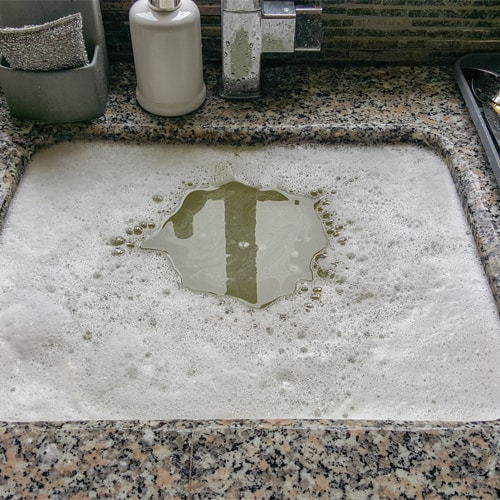
You can try to remove the blocked drain with chemical drain cleaners. You can easily find recipes online for safe and effective drain cleaners made from all-natural ingredients found in most kitchens. More experienced or brave individuals might attempt to clear the drain by renting a plumber’s snake.
If drain cleaners haven’t worked, you don’t have a plunger or snake, or you are unable to clear the drain on your own despite several attempts, contact us for professional drain cleaning before the drain becomes completely blocked.
Clogged bath or shower drain
Clogged bath and shower drains are most often caused by hair. Regardless of age, race, or gender, everyone sheds hair every day. When that hair forms a blob with conditioner or shampoo, it flushes to the drain and clogs there.
/plunger-and-clogged-bath--1199279746-9e2a05ab39f24ebeb6c9326292f8289e.jpg)
The best thing you can do for a clogged shower drain is prevent it from happening in the future. You should clean the tub drain at least once a month. If you keep up with this chore and address any slow drains immediately, you can often avoid expensive repairs. Once a clog occurs, you can use the same methods discussed above for sink drains to attempt clearing the blockage.
If you forget to clean your shower drain for several months, you should call us for a professional drain cleaning service. Call us if you are unable to resolve the clog yourself as well.
Clogged toilet
No one is surprised to see a clogged toilet on a list of the most common plumbing issues. Most homes have a plunger in the tool cabinet, ready for frequent use. Facilities managers of commercial buildings are very familiar with plunging toilets and can usually resolve the issue in a matter of minutes

If you aren’t able to fix a clogged toilet by plunging it, you might need to try a plumbing snake or plumber’s auger. If either of those methods don’t work, or if you can’t get your hands on the appropriate tools for the job, contact your local Midlands plumber for assistance.
Running toilet
A running toilet is actually much more of a concern than a clogged toilet. Clogged toilets can almost always be resolved without costly repairs, but a running toilet can be one of the most costly of all plumbing issues. The more your toilet runs, the more fresh water you waste, and the higher your water bills.

A running toilet isn’t always easy to detect. Most people leave the restroom before the toilet has finished refilling, and you may not hear the water running from other rooms. Once it is detected, don’t ignore it. The cheapest and most common repair is replacement of the flapper valve, which most people can manage on their own.
If replacing the flapper valve or using a toilet repair kit doesn’t fix the problem, there could be sediment causing the issue. This will need to be addressed by one of our professional plumbers.
Faulty water heater
Most water heaters only last about ten years, so if you recently purchased a home or commercial building there is a chance you might need to replace that system. The most common water heater problem is a faulty or extinguished pilot light, with the second most common cause being sediment.
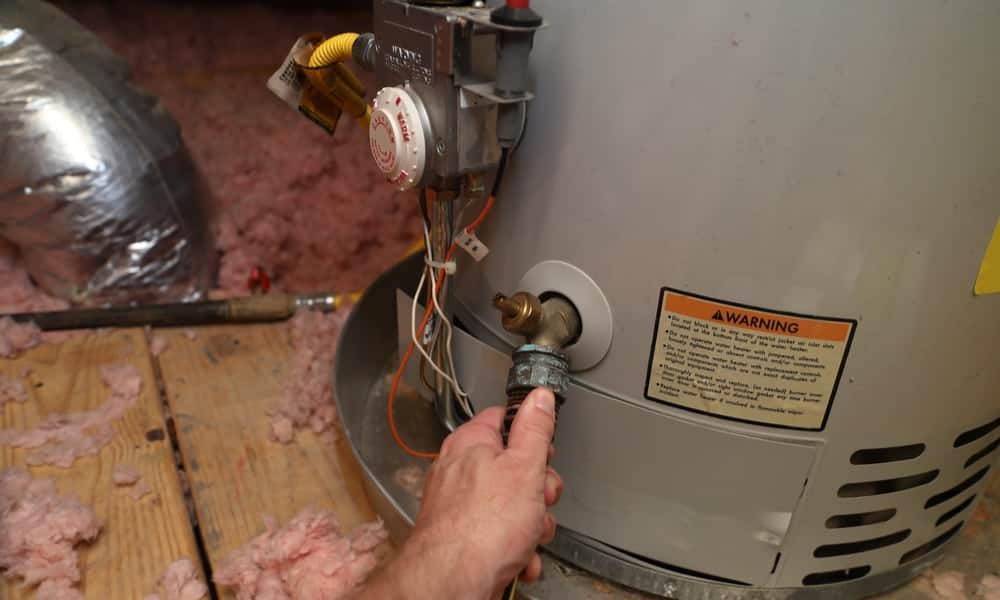
When you notice that your gas water heater isn’t working, check the pilot light first. If you light the pilot and it continues to go out, there could be another issue that needs to be repaired. As a general rule, other than lighting the pilot you should leave all inspections and repairs to the professionals.
Low water pressure
You’ll have noticed we’ve already mentioned sediment more than once in this post. There is a certain amount of calcium and minerals in the water going through your pipes and plumbing fixtures. Over time it can build up and cause a number of plumbing problems, and it is very common in older homes. When you have low water pressure, it is usually caused by this buildup restricting water flow through the pipes or fixtures.
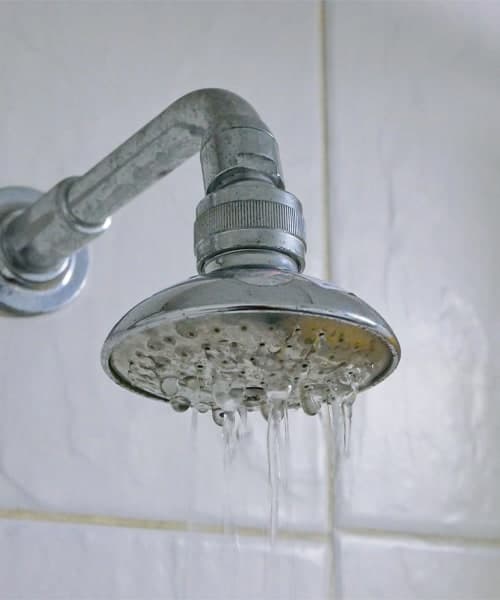
If your shower pressure seems low, try cleaning your shower head in vinegar to remove the sediment. You can use this same method for any plumbing fixture. If that doesn’t improve your water pressure, you need to contact us for a full plumbing evaluation to determine if repair or replacement is the best course of action.
Jammed garbage disposal
Garbage disposals are one of the most convenient kitchen contraptions ever invented. Ridding yourself of food refuse without stinking up the trash has a lot of advantages. But most people don’t realize that you can’t put all food down a garbage disposal, and when you make a mistake it can lead to costly repairs.
The first thing to do when your garbage disposal jams is turn it off, unplug it, and turn off power to the kitchen at your breaker box. Only after you are certain there is no electricity going to the unit, reach down into the disposal to see if there is a small object, such as a piece of silverware or solid food waste, caught in the blades.
You can also use a drain cleaner to remedy any clogged blades from gummy waste put down the garbage disposal. Some people try to pry the blades free with a broom handle or wrench, but this can break the unit and is not recommended. You should never attempt to free the blades with bare hands. If you aren’t able to get cut resistant gloves, leave the repair to a professional with the right personal protective equipment.
If you can’t clear the disposal easily, contact a plumber. Working with sharp blades can be dangerous, and our plumbers have industry knowledge into the inner workings of disposals and how to repair them. We can also replace your disposal if necessary.
Leaky pipes
Leaky pipes are more than a nuisance, they cause serious cosmetic or structural water damage to your property when left unchecked. They are most often caused by faulty joints in the plumbing, but can also be caused by burst pipes. Even though South Carolina is fairly temperate, it can still get cold enough for pipes to freeze when located in attics and crawl spaces.
The best way to avoid expensive repairs for leaky pipes is by signing on for one of our plumbing maintenance agreements so that weak links can be identified before water actually escapes. You can prevent frozen pipes by insulating them with materials for the purpose from your hardware store, or by leaving faucets on a slow drip overnight.
You can repair most joints temporarily with plumber’s tape, compounds, or fillers that can be purchased from your local hardware store. This will at least prevent further water damage while you are waiting on one of our plumbers to repair the leak, usually by replacing that section of pipe and the associated fittings. If you have a burst pipe call our 24 hour emergency plumbing service immediately before serious water damage occurs.
Sewer system backup
Sewer system backups are the worst of all plumbing problems. They are usually caused by a normal (but large) clog, but sewer lines can also be broken or ripped from tree roots and other underground hazards. If you have multiple clogged drains and a disgusting smell taking over your home, you probably have a sewer issue.
That doesn’t mean you have to pay for expensive repairs. Depending on the location of the problem, the utility may need to be contacted.
There are no self-remedies or temporary fixes for a sewer backup. You have to call a plumber immediately for assistance. We can come to your property, find the location of the clog or break in the sewer, determine responsibility, and make repairs as required.
Contact us today for South Carolina plumbing repair
Not only can we help you repair all plumbing issues, we can also replace your plumbing, including fixtures, pipes and fittings. Everyone in the Midlands will need a reliable and professional plumbing repair service at some point. Be prepared by enrolling in our maintenance agreement or scheduling a plumbing inspection.
Read More- By : Leonard Simmmons
- July 23, 2021
- Comments : 0
Cold Water Not Coming Out of the Shower

The only thing worse than a cold shower is a scorching-hot one. If there’s no cold water in your shower, you’ve come to the right place. Lack of cold water is usually caused by a defective pressure-balancing valve in a cartridge. This part is located inside the shower faucet. So, are you feeling handy? With a few tools and some patience, you may be able to replace the valve cartridge on your own.
No Cold Water in Shower

Begin troubleshooting by checking other faucets around the house. If these all don’t have cold water, you can begin to trace the problem. Look for the shutoff valves in your basement or wherever the main water supply line is. A valve may have been accidently turned off. Hopefully, you can just turn the shut-off valve back on and be good to go. If this isn’t the problem, you should call a professional.
If the other faucets around the house do have cold water, then the problem is most likely the pressure-balancing valve.
Why Is My Shower Cold?
Has your shower become far cooler than normal? There are several possible causes of a cold shower. The first and easiest thing to check is the other faucets in your house. See if they run hot and cold water. If the other faucets around the house do have hot and cold water, then the problem is most likely the pressure-balancing valve in your shower.
Why Pressure-Balancing Valves Fail
Pressure-balancing valves regulate both pressure and the ratio of cold and hot water that flows out of the showerhead. Over time corrosion and mineral buildup can ruin a cartridge, especially if the faucet is not turned on very often.
Replacing a faucet valve cartridge isn’t hard but requires taking the faucet apart. The hardest part of this repair is getting the old cartridge out. This is a good time to call a professional if you don’t feel comfortable with this repair. Feeling confident? Keep reading:
How to Replace a Shower Cartridge
The first step is purchasing a new shower cartridge at your local hardware store. The best way to find an exact replacement cartridge is to remove the old cartridge and bring it with you to the hardware store. This job is easiest with a cartridge puller, which you can purchase at the hardware store.
Shower Cartridge Replacement Tools
- Flat head and Phillips screwdriver
- Cartridge puller or tap with matching 4” – 6” bolt
- Hex keys / Allen wrenches
- Needle-nose pliers
- Silicone or plumber’s grease
- Locking pliers
Here are the steps for removing the old cartridge and replacing it with a new one. Use this guide in conjunction with any instructions from the faucet or cartridge puller manufacturer.
How to Replace a Broken Shower Cartridge in 10 Steps
1. Turn off the water supply to the shower.
2. Place a towel over the drain so dropped screws don’t fall in.
3. Remove the faucet handle and any metal covers or trim plates (depending on manufacturer, there may be a small set screw or hex screw at the bottom of the handle or behind a plastic cap).
4. Take a picture of the inside of the faucet body (to reference for reassembly).
5. Remove other parts inside the faucet body.
6. Dissolve any mineral deposits and dirt with a commercial cleaner.
7. Pull the retainer clip out of the faucet body with needle-nose pliers.
8. Remove the cartridge. Use the cartridge puller you purchased.
9. Reinstall the new cartridge with silicone or plumber’s grease. (Pay attention to the orientation!)
10. Reinstall the valve stem, retainer clip and faucet parts. (Reference the photos you took!)
Turn on the water supply and enjoy your cold shower!
Professional Plumbers Who Care

Replacing a shower cartridge is an ambitious DIY project. We won’t begin a job until we tell you how much it will cost and what we’ll do. We believe in transparency every step of the way. If you need cold water in your shower sooner rather than later and don’t want to carve out an afternoon for replacing a shower cartridge, just call us.
Read More- By : Leonard Simmmons
- July 12, 2021
- Comments : 0
Our Top 10 Plumbing Tips
Plumbing is just kind of there for most of us. We don’t spend a lot of time thinking about it, or worry about maintaining it. But when it suddenly stops working properly, or we run into a problem, boy do we notice!
It’s absolutely no fun to deal with plumbing problems. That’s why we’ve made this list of our top plumbing tips that will help prevent some of your biggest pet peeves when it comes to your pipes.
1. Don’t Pour Grease or Oil Down the Drain

Have you ever heard people talk about eating food to get a ‘grease coat’, or fill themselves up? The same thing that happens when you eat greasy food happens when you dump grease or oil down the drain.
The grease and oil will build up. You won’t notice it at first – you’ll think it’s totally fine, and that as a liquid, down the sink is where it should go. But little by little that grease and oil will clog your pipes and leave you with some serious plumbing problems.
Think about your pipes before pouring that cooking liquid down the drain, and opt for a safer disposal option. For example, wait for fat to solidify before throwing it in your compost bin.
2. Use A Strainer
Clogs are one of the most common plumbing problems, and when it comes to a shower or sink drain, it can become gross and messy thanks to hair and soap residue.
Avoiding the icky is as simple as using a basket strainer. This will help prevent a time-consuming and unpleasant task in the future.
3. Watch What You Flush
There are certain things that should be flushed and certain things that should definitely not be flushed. We’re pretty sure you catch our meaning.
If you start flushing things other than toilet paper and bodily waste down the toilet, you could cause some serious clogs that we’re betting you really don’t want to deal with. That includes hygiene products, cotton balls, prescription medications, and yes…unfortunate fish.
If you’re noticing that your toilet becomes clogged more and more frequently, there are some additional causes that could be the root of your problem.
4. Know Where Your Main Water Valve Is
Plumbing isn’t one of the things that you actively learn about, but it is important to know where your main water valve is and what to do if there is an issue.
If, knock on wood, you have pipes burst, turning off your main water valve will help minimize the damage until we can get there to help. If you don’t know where it is, you’re going to spend a lot of time scrambling while your home sustains significant water damage.
5. Test Your Toilet’s Flush Valve Seal for Leaks
Toilet leaks can be a real pain, but if you catch them early they’ll be more manageable and could save you some more serious plumbing problems down the road.
One of the places you’ll likely find a leak is in your toilet’s flush valve seal. The flush valve seal is what keeps water from flowing from the tank to the bowl of your toilet when it isn’t in flushing mode. Catching a leak in your flush valve seal early requires a simple test: food colouring.
No, you didn’t misread that. All it takes is a couple of drops of food colouring in your toilet tank. Check back in a few hours. If some of the coloured water has found its way into your toilet bowl, that means you have a leak.
6. Make Sure Your Main Sewer Drain Is Accessible
While your plumbing is normally out of sight, it is important that your main sewer drain is always free and clear. This is because in case of a sewage line blockage, we need to be able to move quickly and efficiently.
Your drain access point should be uncovered (that means no rugs or carpeting) and easy to get to – no maze of holiday decorations or old children’s toys to contend with.
Top Tip: Basement flooding is a real problem, particularly if you live in certain areas. We have some steps you should follow to help make sure you don’t get an unexpected indoor swimming pool.
7. Prevent Your Plumbing From Freezing
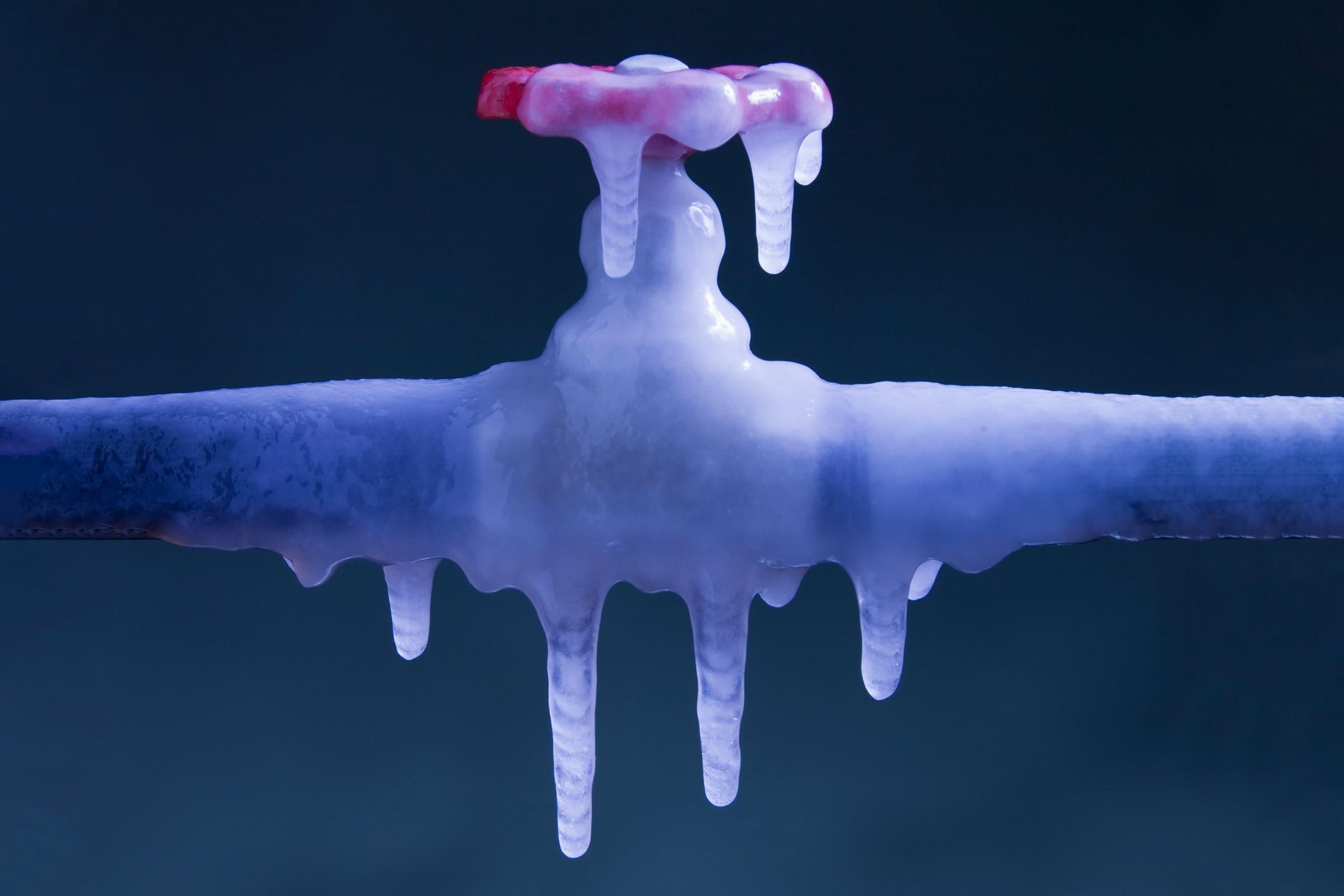
While not a problem in the summer, once winter rolls around temperatures are going to take a dive. Once they get low enough, your plumbing will have an increased risk of freezing.
One of the best plumbing tips we can give you is to make sure that your always have air circulating through your home, and that is at a minimum temperature of 16 degrees Celsius. You should also insulate as many of the outside wall plumbing lines as possible to avoid potential catastrophes.
If you have a room that gets particularly frigid in the fall, and downright miserable in the winter, don’t wait until then to look into options for better air circulation. Take the warm months to come up with solutions.
Top Tip: Outdoor taps can also lead to frozen pipe problems. Make sure your garden hose valve and the hose itself are completely drained of all water before the first frost.
8. Avoid Chemical Drain Cleaners

Chemical drain cleaners are straight up awful when it comes to the health and wellbeing of your plumbing. People tend to go for them because they are advertised as immediately effective, but they can do more damage in the long run.
If you need something to help rid yourself of a pesky clog, BioOne is a non-caustic, safe drain cleaning option. It uses a natural bacteria that dissolves organic matter, without causing harm to the inside of your pipes.
Once you clear up those clogs, keep them away by using BioOne once a month on every drain in the house.
9. Consider Separate Shut Off Valves on Your Fixtures

Your plumbing is going to need repair eventually; it’s inevitable. No doubt you’re not looking forward to the day when you have to shut all of your water off so someone can come and do the work.
We have a way around that. Installing separate shut off valves on your fixtures will eliminate the all water or no water problem, because you’ll be able to turn off the water to different parts of the house when you need to. That way if you have a problem with your bathroom, you can still use the kitchen sink.
10. Prolong Your Tap’s Life
How many times have we been terrified to hear that drip, drip, drip of the faucet, so we make sure the taps are turned off as tight as they can go?
This is actually bad for your tap’s seal; it wears it out more quickly because of the increased pressure it is experiencing every time it is turned to tight. Think of it like a pencil; the more pressure you put on it, the more worn down it gets.
To avoid this, turn the tap until you feel the natural stopping point; don’t force it closed. Like the pencil, you want to apply the amount of pressure that is just right.
Read More- By : Leonard Simmmons
- June 28, 2021
- Comments : 0
How To Finding A Quality Plumbing Company In Hudson Florida
Unfortunately, every Florida home owner is likely to experience plumbing issues at some point. Some of the common plumbing issues residents of Hudson, FL and all through Florida are likely to face include clogged drains, running toilet, faulty water heater, slow draining sink, dripping faucets, low water pressure, faulty heating, among others. Although you may be swayed by the growing DIY culture, hiring a professional plumbing services provider when you encounter plumbing problems is the right approach and the right thing to do for various reasons.
You will not put yourself or your family at risk when you leave plumbing problems to the experts. KBR Plumbing is an up and coming plumbing company in Hudson Florida that is committed to plastering smiles on the faces of all their clients. They provide full service residential plumbing services in the greater Hudson, Florida. Having been in the plumbing industry for quite some time now, they have the expertise and tools to handle any plumbing issue, regardless of the size or complexity.
Florida residents trust them because they work with vetted plumbing experts. KBR Plumbing only work with certified and experienced technicians to guarantee your safety and value for your money. Our team of professional plumbers is friendly, approachable, and dedicated.
When you hire KBR Plumbing, you will get several years of professional expertise, attention to detail, and dedication. They are your go-to option for all your plumbing needs. Discover what they can do for you below.

RESIDENTIAL INSTALLATION AND REPAIRS
At KBR Plumbing, they pride ourselves in offering a wide range of residential plumbing services to cater to all your plumbing needs. Get in touch with them immediately you experience a plumbing issue in your home. They handle everything from blocked drains to replacing water heaters. Take a glance at our wide range of residential plumbing services below:
SEWER LINE CLEARING AND REPLACEMENT
Do you suspect your sewer lines are blocked? If you do, let our approachable licensed technicians handle it for you. They will use their expertise and the latest plumbing equipment to identify the issue and fix it for you before it backs up into your property.
TOILET INSTALLATION, PARTS, AND REPAIR
Are you dealing with toilet problems? If you answered yes to this question, you should contact them. Whether it is blocked, leaked, or requires replacements, they will work hard to have it repaired as soon as possible. You can contact them any time of the day for all your toilet installation, repair, and replacements.
GARBAGE DISPOSAL REPAIR AND INSTALLATIONS
Keeping garbage away from your residential property reduces diseases and increases curb appeal. At KBR Plumbing, they have the expertise and tools to repair or replace your garbage disposal in a couple of minutes. They carry this equipment on hand every time to come to your rescue immediately.
PROPERTY REMODELING AND NEW CONSTRUCTION
Do you want to give your property a fresh look? Well, contact them for your upcoming remodeling or new construction project. They work with the leading remodelers and contractors in the country to guarantee your money’s worth. When you hire KBR Plumbing, you can rest easy, knowing your project is in the best hands.
WATER LEAK DETECTION AND PIPE REPLACEMENT
Undetected water leaks can lead to severe financial, environmental, and structural damage. That is why you should hire them to inspect your home for water leaks and broken pipes. They use the latest leak detection technology to spot even the most minor leaks. Our dedicated team is ready to provide full property-re-piping.
DRAIN INSTALLATION OR MAINTENANCE
Our licensed and insured team will ensure your drains are entirely functional and draining properly. They will snake or jet the drains if they are slow due to grease and objects build up.
FAUCET REPAIR AND INSTALLATION SERVICES
In our several years of experience, they have handled numerous broken faucets. Our expertise allows them to repair or replace any faucets. They have and use a large inventory of certified faucets that will suit your needs and preferences.
WATER HEATER OR SOFTENER REPAIR AND INSTALLATION
Lack of hot water on your residential property can have adverse effects. Our professional plumbing team can service any tank and tankless water heaters. They also have a large inventory of spare parts in case you need a replacement.
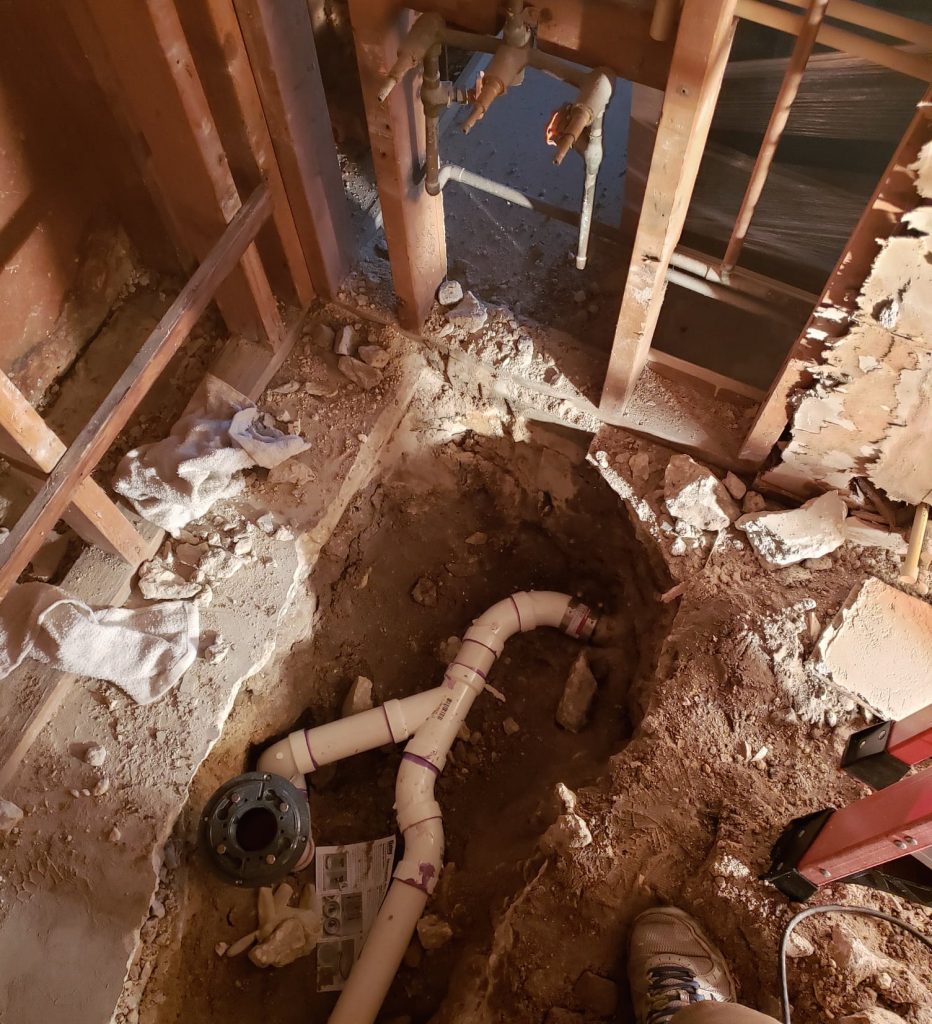
WHY HIRE KBR PLUMBING
Our technicians are highly trained and have the knowledge to handle high-end plumbing equipment. They take time to analyze your plumbing system to discover the plumbing problem you have. The high-end equipment they use will ensure that all your plumbing problems will be handled efficiently. For instance, you are assured that our technicians will handle all your clogged pipes. They will also provide you with a detailed report that will inform you of the problems you have, solutions, prevention steps, and problems you may encounter in the future.
QUALITY WORK
When you need to save your time and get expert solutions to plumbing problems, you need to hire them for the job. Our highly trained technicians can find the source of your plumbing issues and provide a permanent solution. Hiring our technicians will also guarantee that your structure will not be damaged as they fit all your faucets and pipes.
AWARE OF THE PLUMBING AND BUILDING CODES
They have highly trained technicians who are well aware of the plumbing and building codes. Hence, you are assured all the plumbing system installations will follow plumbing and building codes. All future disasters will be prevented when you pick them.
HYGIENE
When you hire them to handle the plumbing issues, you will save yourself from having all the drainage waste on your property. Our technicians are aware of the different regulations. They have also set procedures that ensure your property will not be damaged as they work on your plumbing issues. Once they have handled your plumbing problems, our technicians always clean up.
RELIABLE SERVICES
Our technicians have handled different plumbing issues since they have been in the profession for a long time. KBR Plumbing guarantees quality plumbing services and solutions to the most complex problems. If you have emergency plumbing issues, you will be assured of a prompt response since they offer 24/7 emergency services.
LICENSED AND INSURE
KBR Plumbing is licensed, insured and bonded to protect your property and loved ones. They have also conducted a background check on all our technicians to ensure that you will be safe as you get your plumbing needs handled.
They are screened and approved by Home Advisor and Better Business Bureau. Check our past projects [https://www.kbrplumbing.com/about-us/] and Yelp reviews to see why they are the leading plumbing company in Hudson, Florida. Call KBR Plumbing at (727) 809-6754 today to claim your free appointment or visit their Google business listing below to learn me:
Read More


